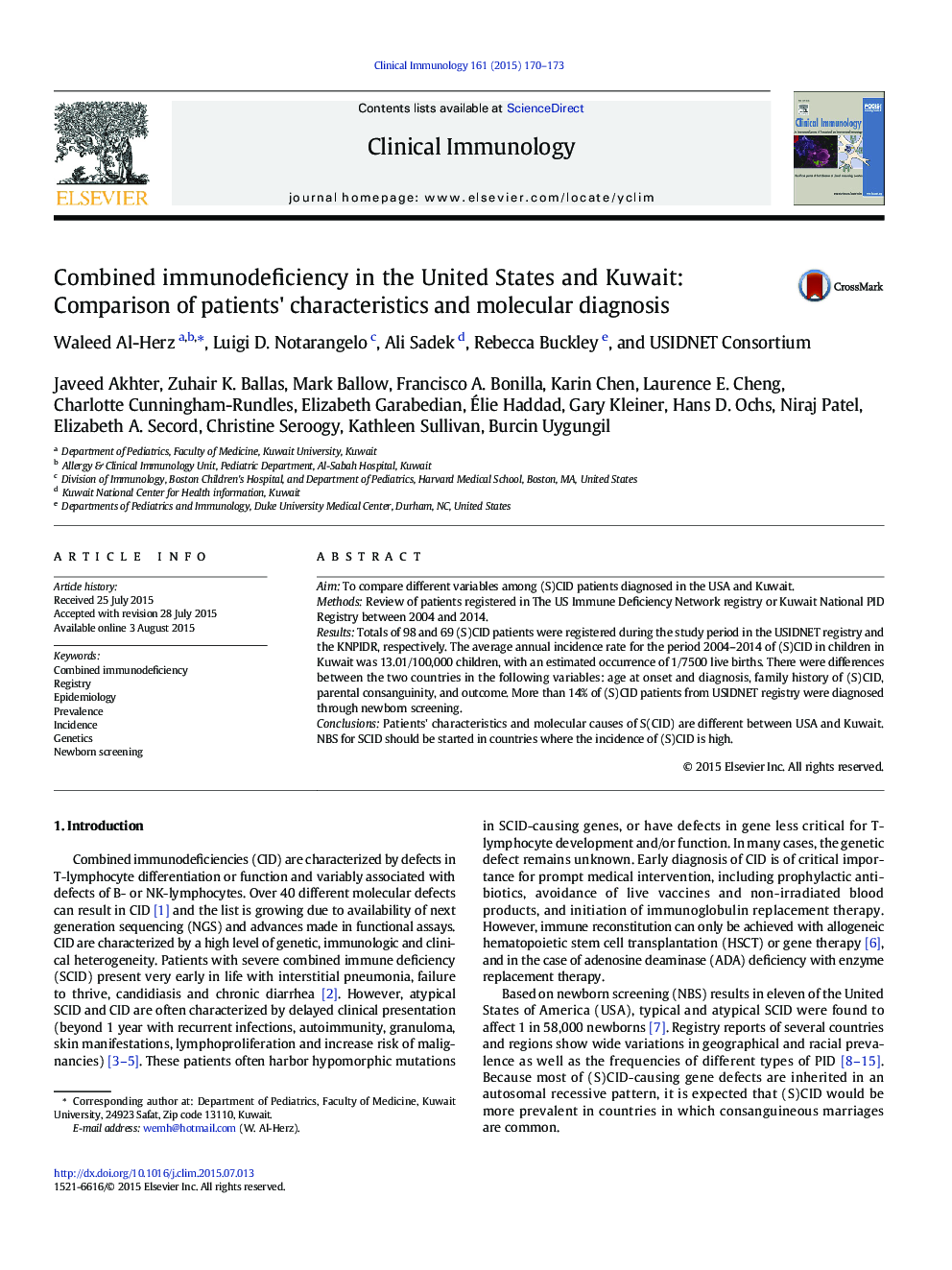| Article ID | Journal | Published Year | Pages | File Type |
|---|---|---|---|---|
| 6087102 | Clinical Immunology | 2015 | 4 Pages |
â¢Patients' characteristics and molecular profile of CID patients in the USA and Kuwait are different.â¢CID is more prevalent in Kuwait than in the USA probably related to the practice of consanguineous marriages.â¢Genetic counseling and family education should be an integral part of the patients' care to facilitate early diagnosis.
AimTo compare different variables among (S)CID patients diagnosed in the USA and Kuwait.MethodsReview of patients registered in The US Immune Deficiency Network registry or Kuwait National PID Registry between 2004 and 2014.ResultsTotals of 98 and 69 (S)CID patients were registered during the study period in the USIDNET registry and the KNPIDR, respectively. The average annual incidence rate for the period 2004-2014 of (S)CID in children in Kuwait was 13.01/100,000 children, with an estimated occurrence of 1/7500 live births. There were differences between the two countries in the following variables: age at onset and diagnosis, family history of (S)CID, parental consanguinity, and outcome. More than 14% of (S)CID patients from USIDNET registry were diagnosed through newborn screening.ConclusionsPatients' characteristics and molecular causes of S(CID) are different between USA and Kuwait. NBS for SCID should be started in countries where the incidence of (S)CID is high.
